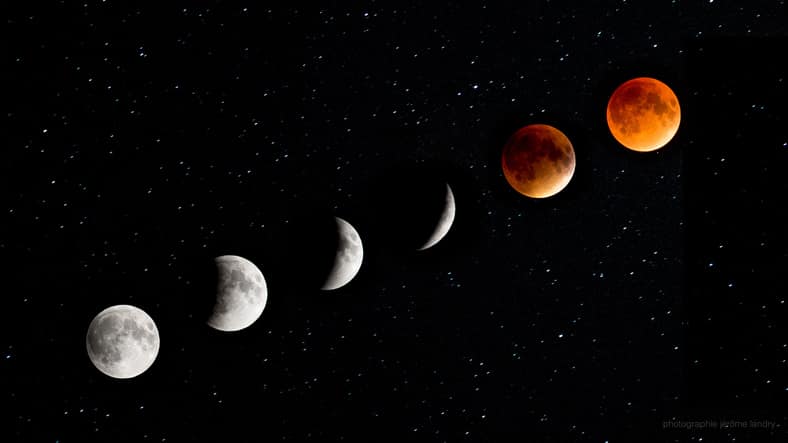Trilogy of Moon Cycles Come Together for Rare Event

Parts of the United States will get a treat on Jan. 31 when three moon cycles line up, resulting in a bright, red moon.
A supermoon, blue moon and total lunar eclipse will come together for the first time in the U.S. possibly in more than 170 years. The phenomena last coincided in parts of the Eastern Hemisphere, including India and China, on Dec. 30, 1982.
“We’ve had a lot of supermoons and we’ve had lunar eclipses, but it’s rare that it also happens to be a blue moon. All three of these cycles lining up is what makes this unusual,” said Dr. Jason Aufdenberg, associate professor of Physics and Astronomy and undergraduate program coordinator for Astronomy and Astrophysics, at Embry-Riddle Aeronautical University’s Daytona Beach Campus. “It’s just a wonder to behold. It makes people appreciate all these cycles and periods of the full moons coming together.”
From his research, Dr. Aufdenberg found that a supermoon, blue moon and total lunar eclipse were visible from the eastern U.S. on May 31, 1844 and visible for the whole U.S. on May 31, 1341.
A lunar eclipse, which occurs at least twice a year, happens when the Earth passes directly between the sun and the moon, resulting in the Earth casting a shadow on the moon.
A supermoon, which can happen four to six times a year, occurs when the full moon is at the closest point of its orbit around Earth, and a blue moon happens every two years, eight months and 18 days.
Despite its name, the moon is not actually blue at all, just the second full moon in a month. The moon will actually be red in parts of the U.S., resulting in a “blue blood supermoon.”
“The moon almost always looks red during a lunar eclipse because all the sunsets of the world are falling on the moon,” Dr. Aufdenberg said. “If you imagine standing on the moon and looking back at Earth, you are seeing scattered sunlight coming through the ring of atmospheric gases surrounding the rocky Earth. All the light is red for the same reason the sunset is red — it’s passing through an enormous amount of air.”
The best place for viewing, Dr. Aufdenberg said, will be over the Pacific Ocean, fully visible from Australia, all of China, most of Russia and the entire Arctic.
Viewers in Hawaii and Alaska will see all partial phases and the entire totality phases. Also, in the United States, from east Texas up to Michigan and westward will see the entire hour and 16 minutes of totality, Dr. Aufdenberg said.
At Embry-Riddle’s Prescott Campus in Prescott, Arizona, the partial eclipse will begin at 4:48 a.m. and enter totality about 5:51 a.m.
“The red color during a lunar eclipse is very distinctive and it’s a rare treat to be able to see a blood red moon,” said Dr. Brian Rachford, associate professor of Physics and chair of the Astronomy Program at the Embry-Riddle Prescott Campus. “One of the great things about a lunar eclipse is you also don’t need any special equipment to see it. Anyone can go outside and look at the moon.”
In Florida and on the East Coast, people will see only a partial eclipse, beginning at 6:48 a.m. EST.
“Right at sunrise observers may notice that the top edge of the moon is a little bit dimmed, which marks the beginning of the eclipse,” said Dr. Terry Oswalt, professor of Engineering Physics and chair of the Department of Physical Sciences at the university’s Daytona Beach Campus. “If you go out before the sun comes up while the sky is still dark, you’ll see a nice bright, round full moon.”
Florida could see higher ocean tides, which occur during a full moon. A supermoon could mean even larger tidal effects.
Next year is an event astronomers are looking forward to even more. On Jan. 21, 2019, the entire United States will see the lunar eclipse in totality at about midnight Eastern Standard Time.
Embry-Riddle’s Daytona Beach Campus, home of the largest university-based research telescope in Florida will hold astronomy open house nights starting in February.

 Deborah Circelli
Deborah Circelli